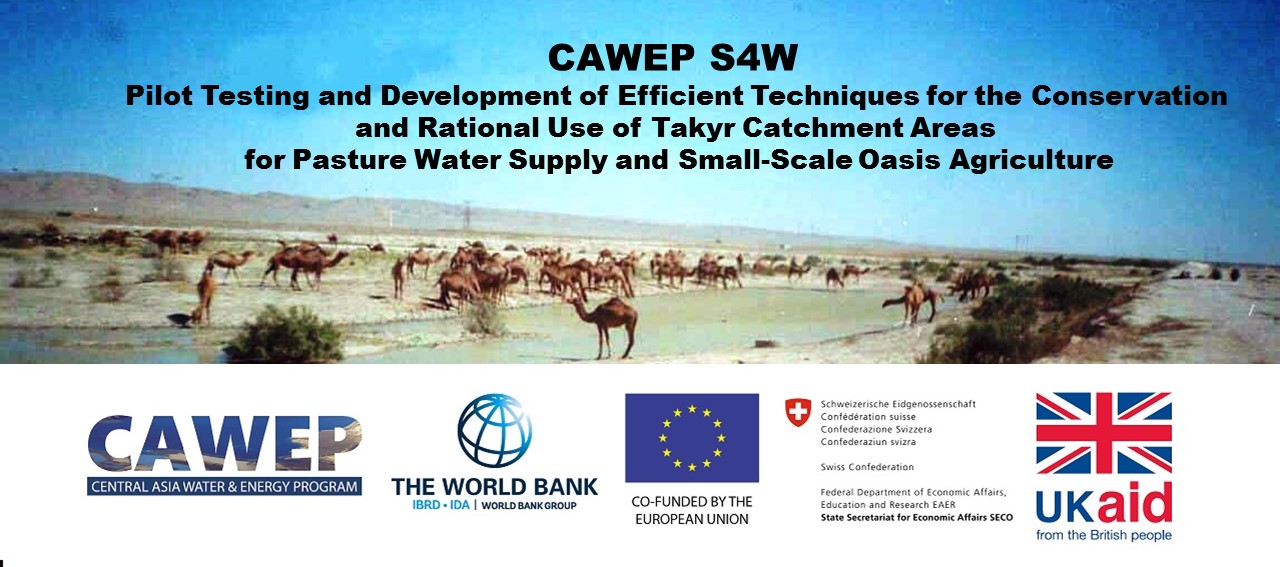
Pilot Testing and Development of Techniques for the Conservation and Rational Use of Takyr Catchment Areas
CAWEPBackground
The problem of water shortage is an acute issue in remote desert areas of the Central Asian countries and Turkmenistan, in particular. The excessive and inefficient use of water for agricultural activities supplied through the canals and similar irrigation installations in the Central Asian countries has been a prime cause of the drying up of part of the Aral Sea, of soil and vegetation degradation and of the damage to the quality of life.
Nomadic livestock breeding is traditional branch of economy in Kazakhstan, Uzbekistan and Turkmenistan. During the Soviet period water to the distant stock-breeding settlements was delivered by trucks, planes and pipes. This approach to water supply is extremely expensive and does not promote agricultural development of the areas. A feasible alternative to the present water supply scheme (or lack of it) to this remote and widely scattered population, without investing in sophisticated and costly infrastructure, is to revive and improve the use of indigenous water collecting techniques. The common denominator of these techniques is the collection of runoff water generated on takyrs (salt flat soil crusts in deserts). The possibility of using water from local sources for agricultural production is of great interest to local communities and governments.
The desk research and literature analysis were conducted in Spring 2020 and resulted in a comprehensive report. The research revealed a reduction of catchment takyrs, which is influenced not only by anthropogenic but also by natural factors. Wind erosion, which is linked to the seasonal movement of sand flow on the takyr surface, is one of the main factors leading to the degradation of takyr. It is recommended to proceed with field experimentation and evidence gathering on the approaches to protection and use of takyrs by testing and implementation of a full cycle of phytomeliorative works on the sites of specific takyr objects in Turkmenistan.
Project Development Objective
to conduct pilot testing and development of effective methods for the conservation of takyr watersheds and their rational use for grazing water supply and small-oasis agriculture the reclamation. Key tasks include: 1) studying the characteristics of runoff in takyr watersheds; 2) field testing of protective afforestation technologies on takyrs; 3) summarizing results, developing and proposing effective methods for the reclamation of moving sands around takyrs.
